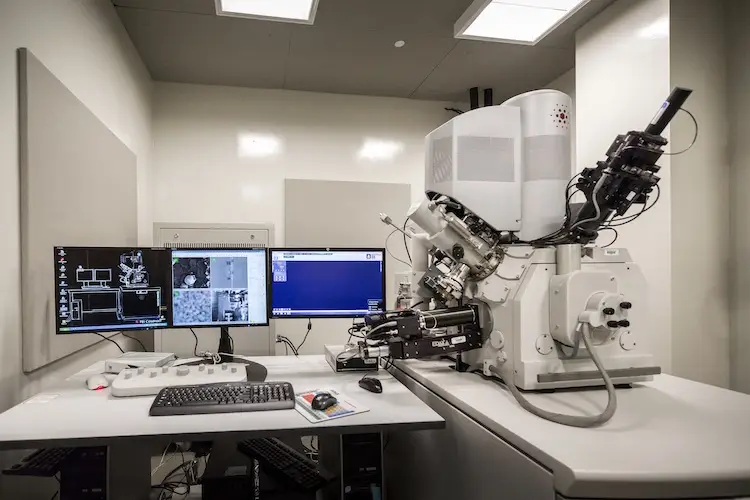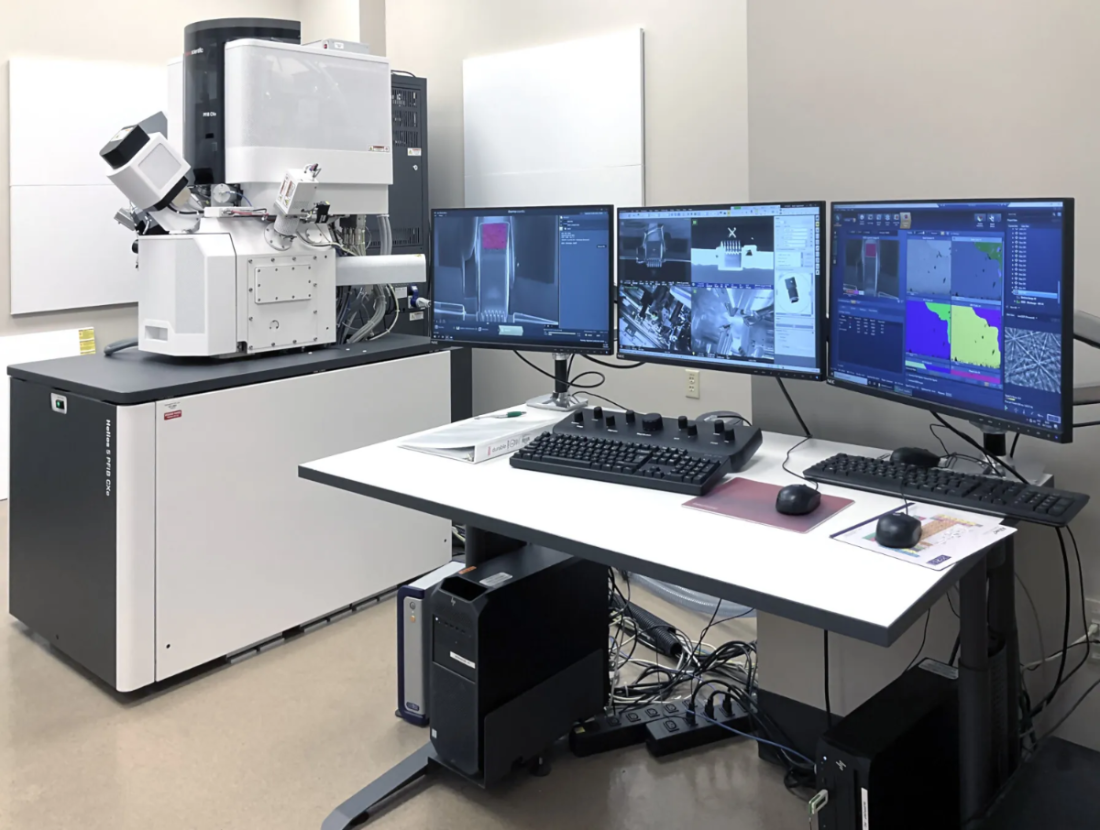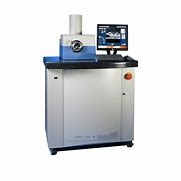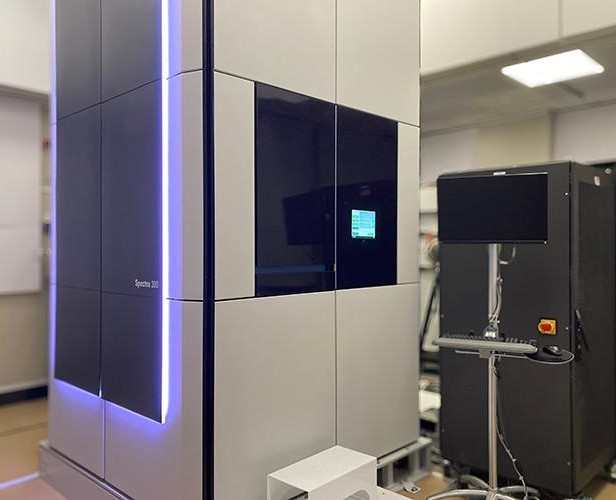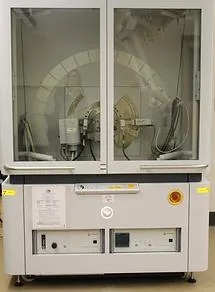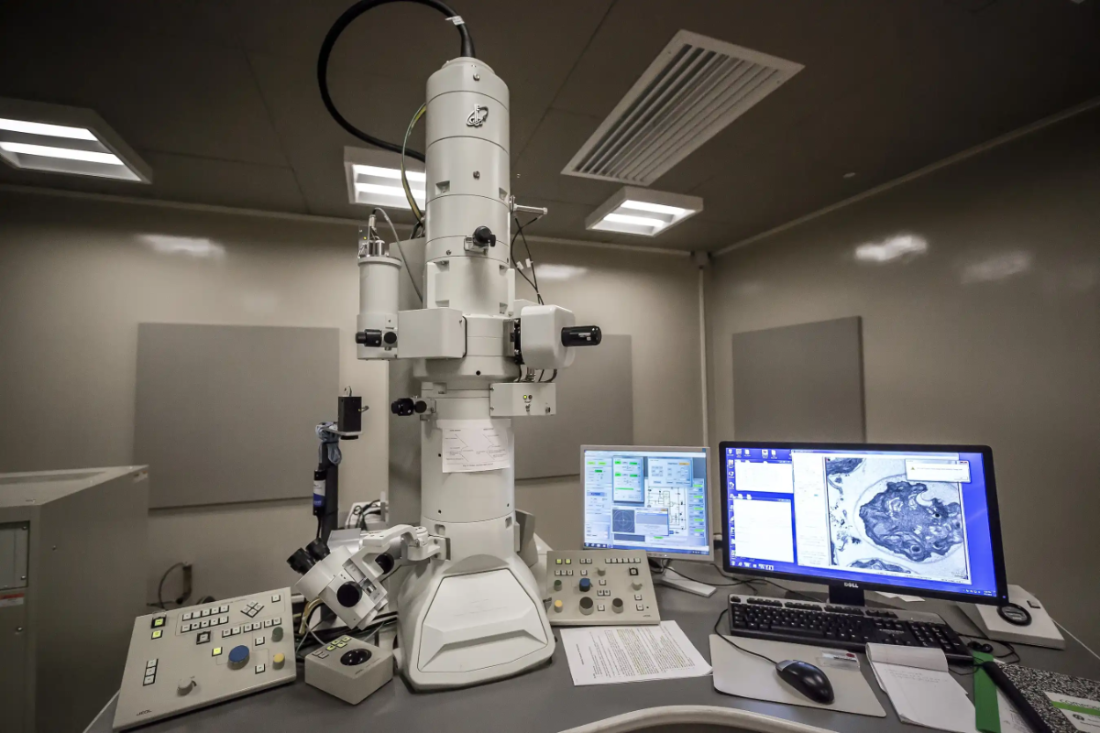Lab Capabilities
Power Metallurgy Lab
Our Powder Metallurgy Lab houses our advanced ball milling capabilities, allowing for the synthesis of alloys and novel materials. Each of the three ball mills offers a unique advantage: the SPEX 8000M Mill is ideal for room temperature runs, the Retsch MM 500 Mill offers cryogenic capabilities, and the Zoz Simoloyer mill offers large milling capacity and advanced process monitoring.
The VigorTech Omni-lab Glovebox ensures that all loading and unloading of materials occurs in a controlled, inert environment. The Pace Technologies FEMTO 1100 AutoPolisher allows for sample preparation after mounting, and the light optical microscope and microhardness tester facilitate microstructural characterization and mechanical property testing respectively.
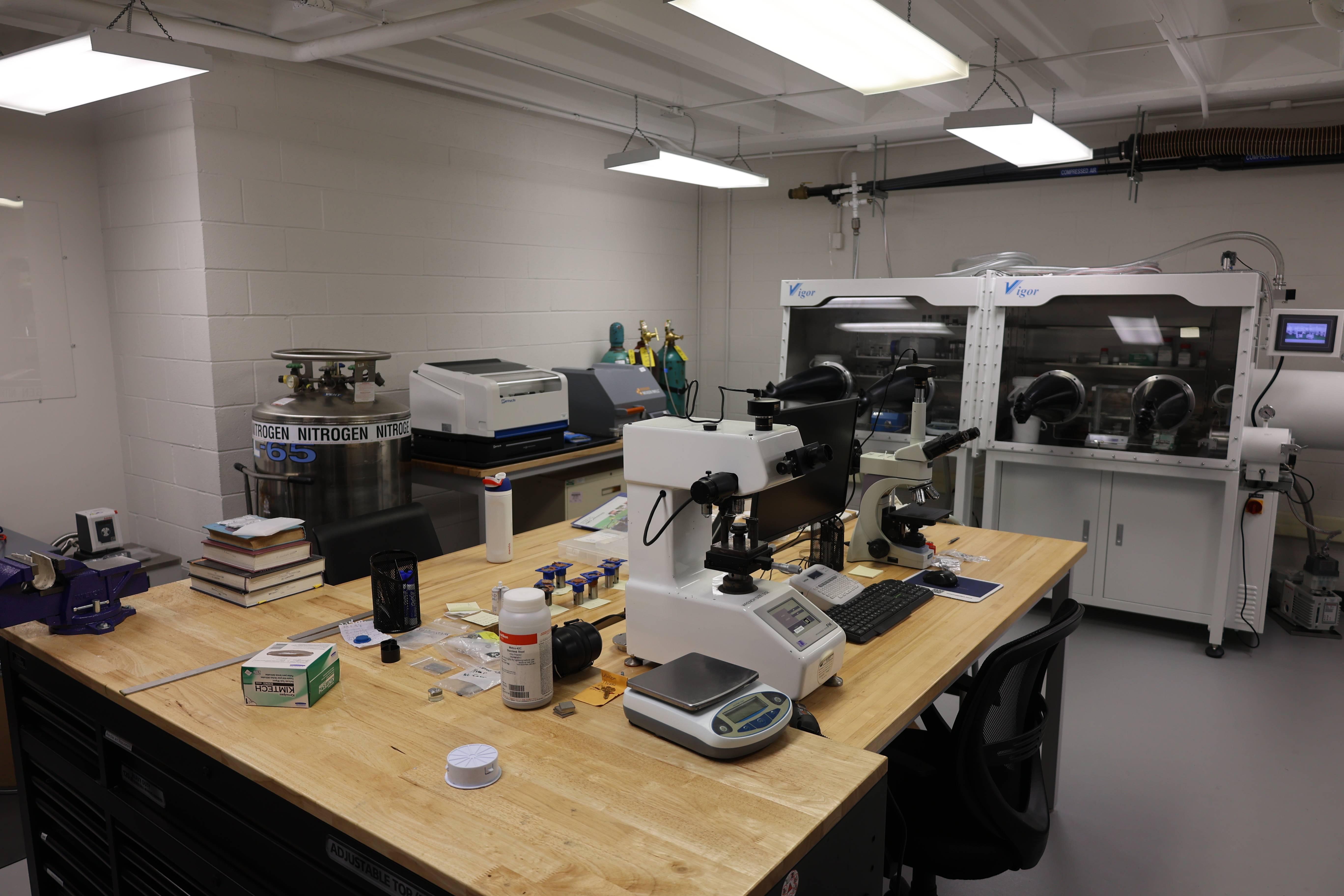
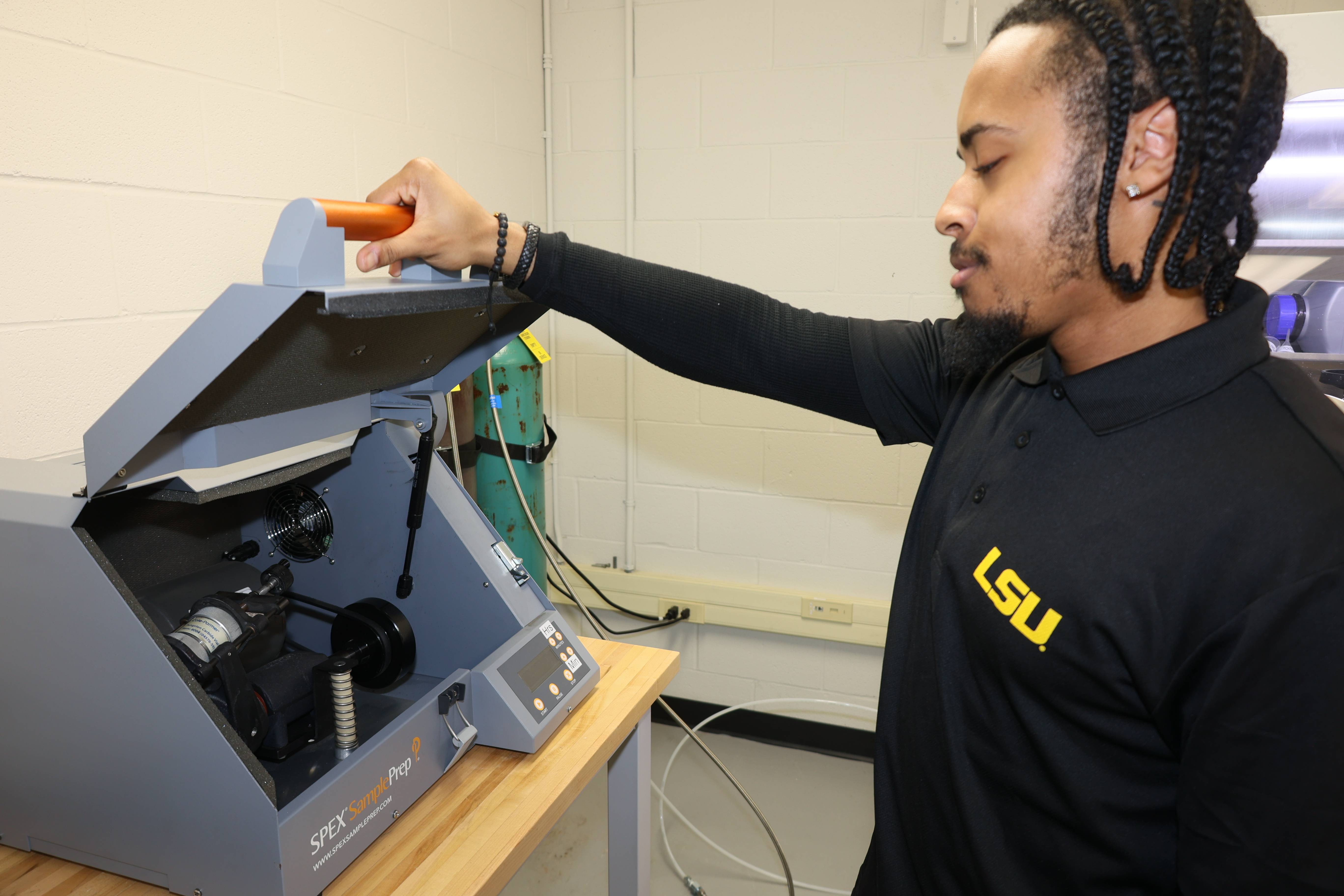
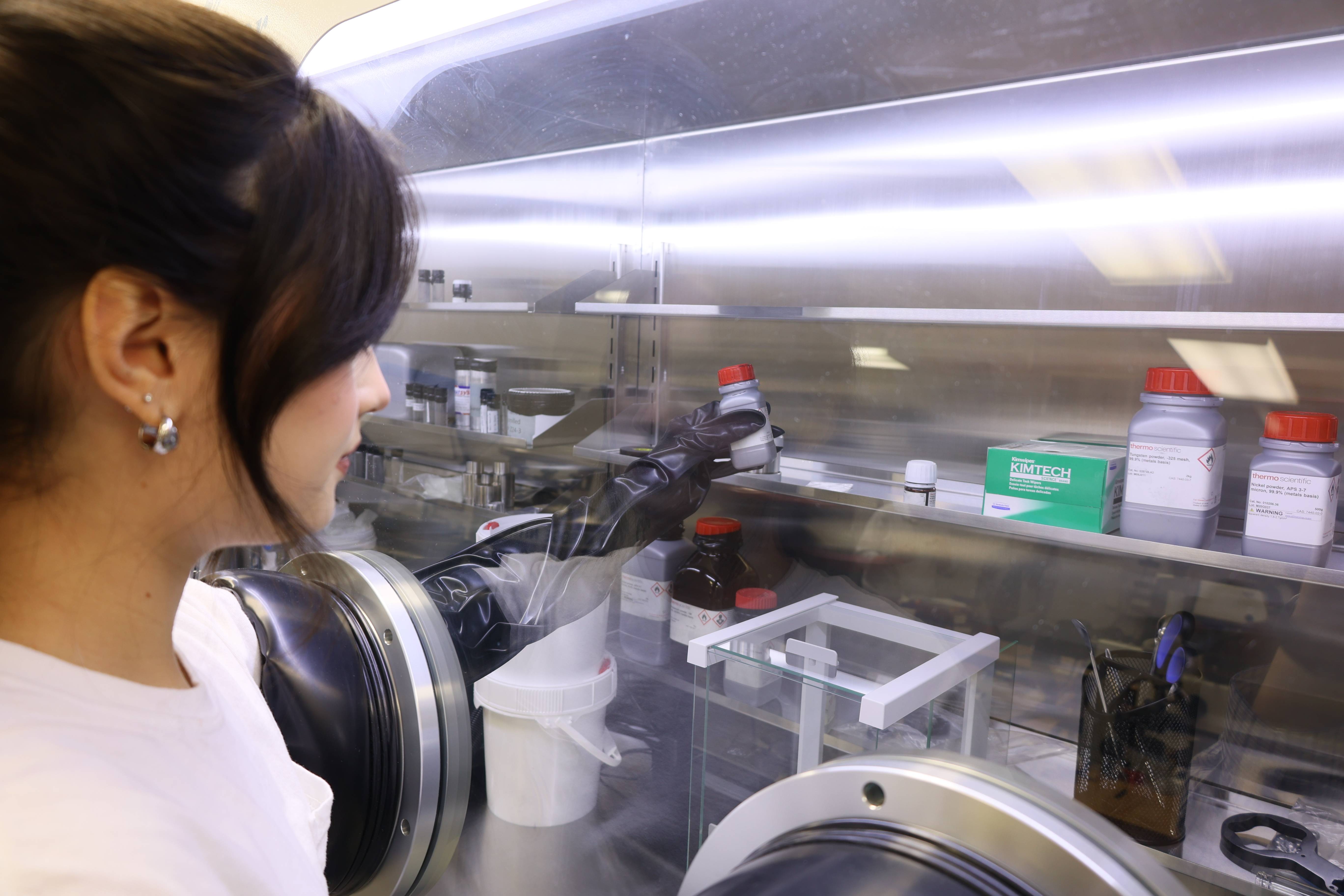
The vacuum glove box is specialized for O2 and H2O removal which ensures stability of metallic powders and reactive materials. The glove box is fitted with a high-efficiency Vigor purifier and Pfeiffer Adixen 2005 I Pascal Rotary Vane Pump. All loading and unloading of milling vials are performed inside the glove box.
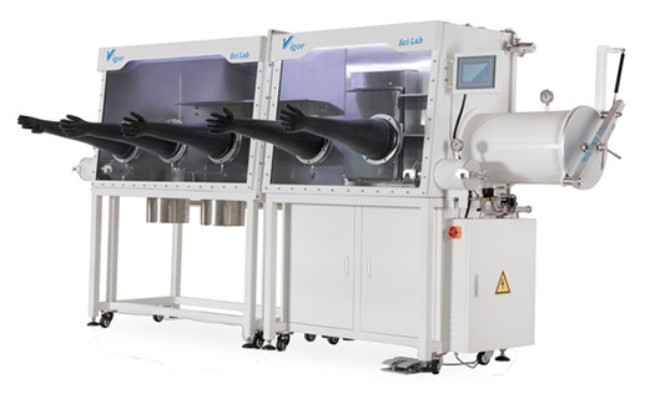
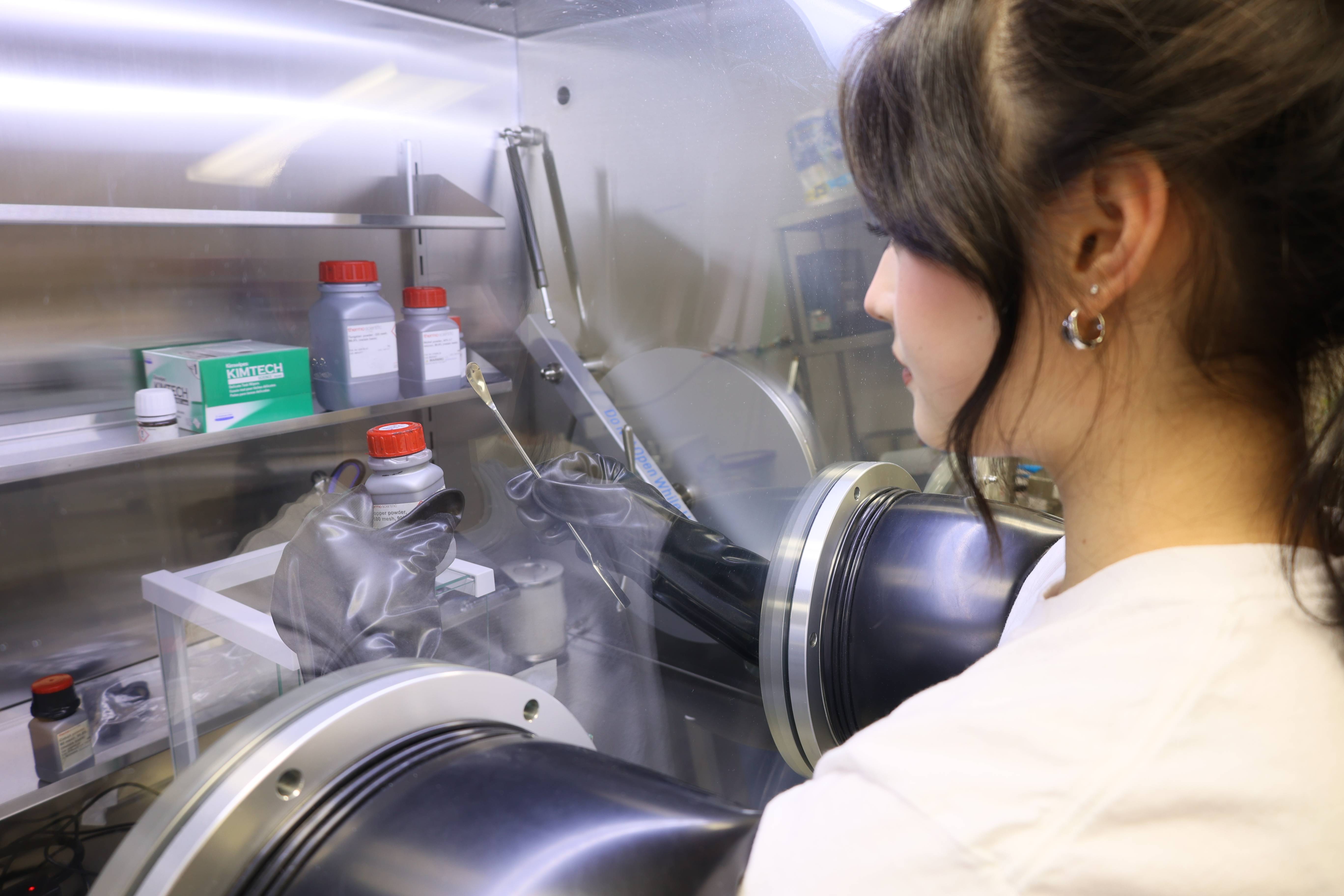
The Spex 8000M mixer/mill is a single clamp, powerful high energy ball milling equipment that pulverizes hard and brittle material particles into extreme fineness. The milling vial can be made up of either steel, alumina or tungstun carbide and is capable to mill ~10 g of powder per run with upto 1060 cycles per minute (cpm) @60,Hz, 115V.
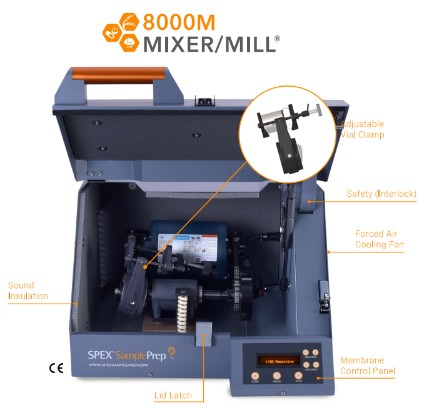
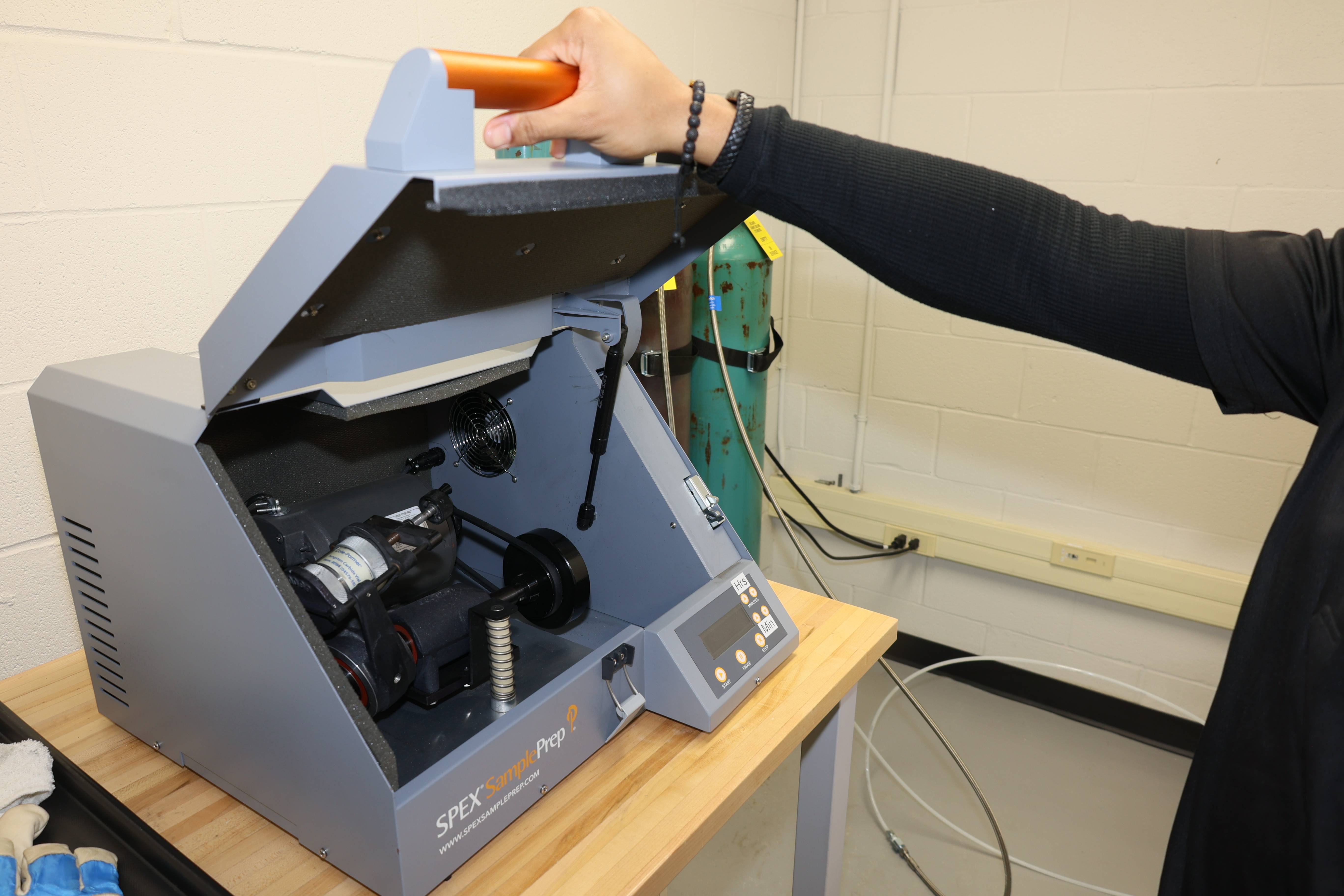
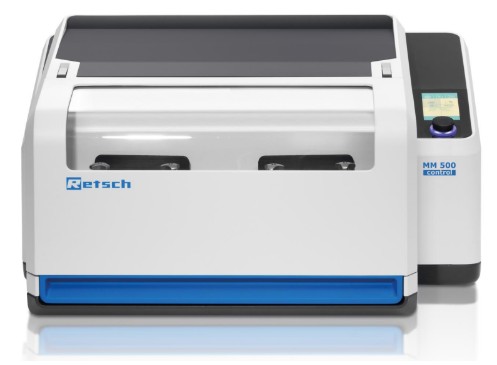
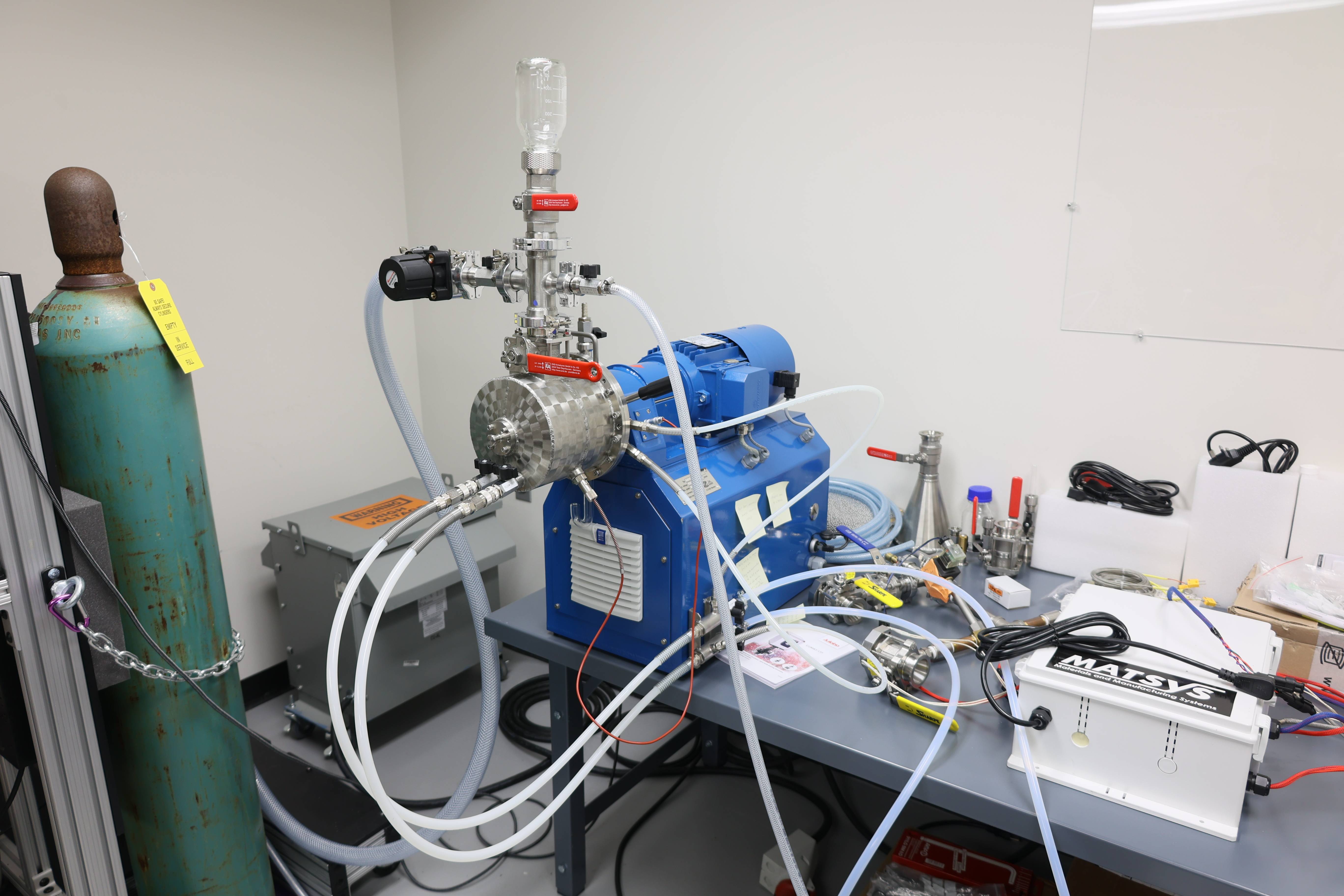 .
.
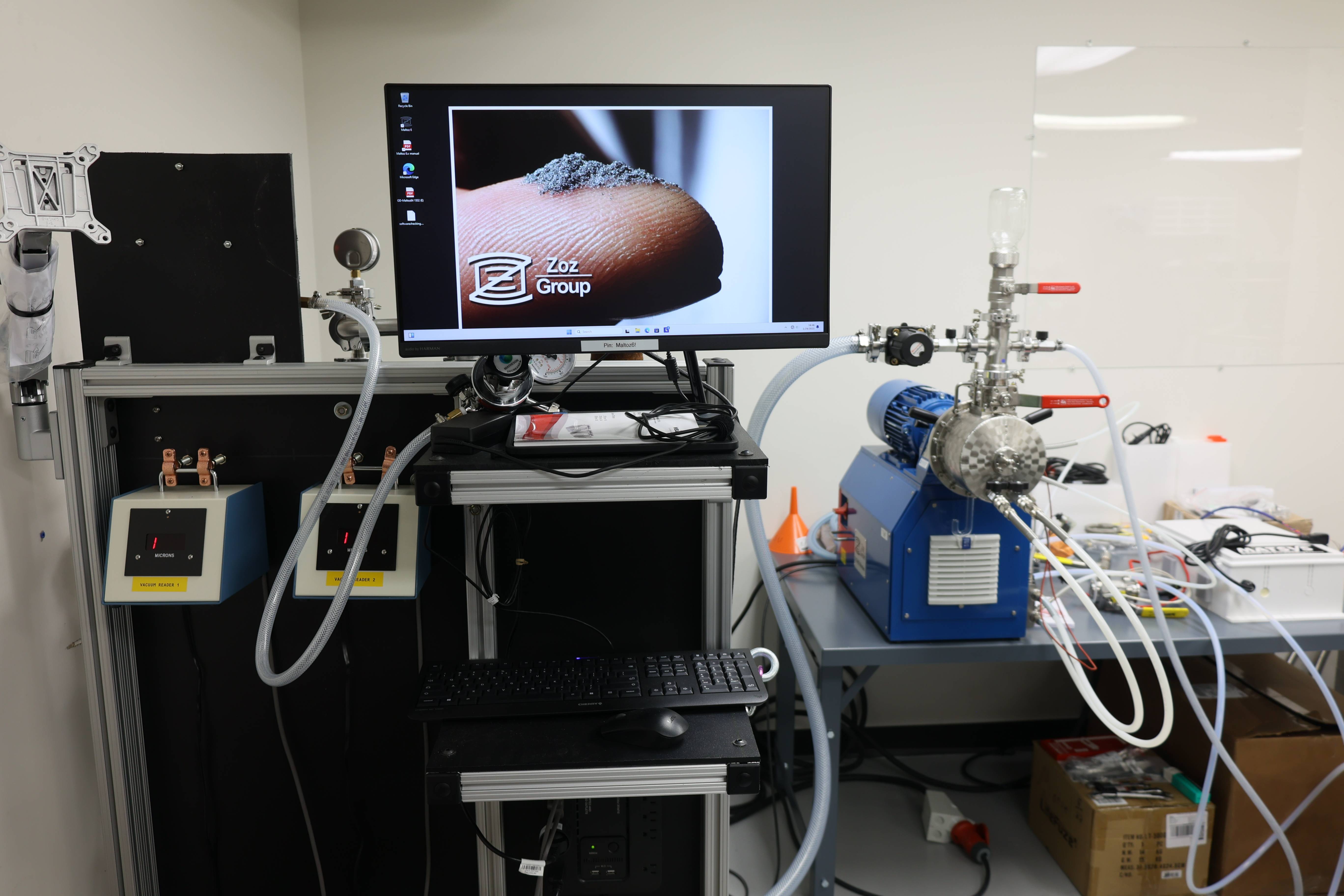
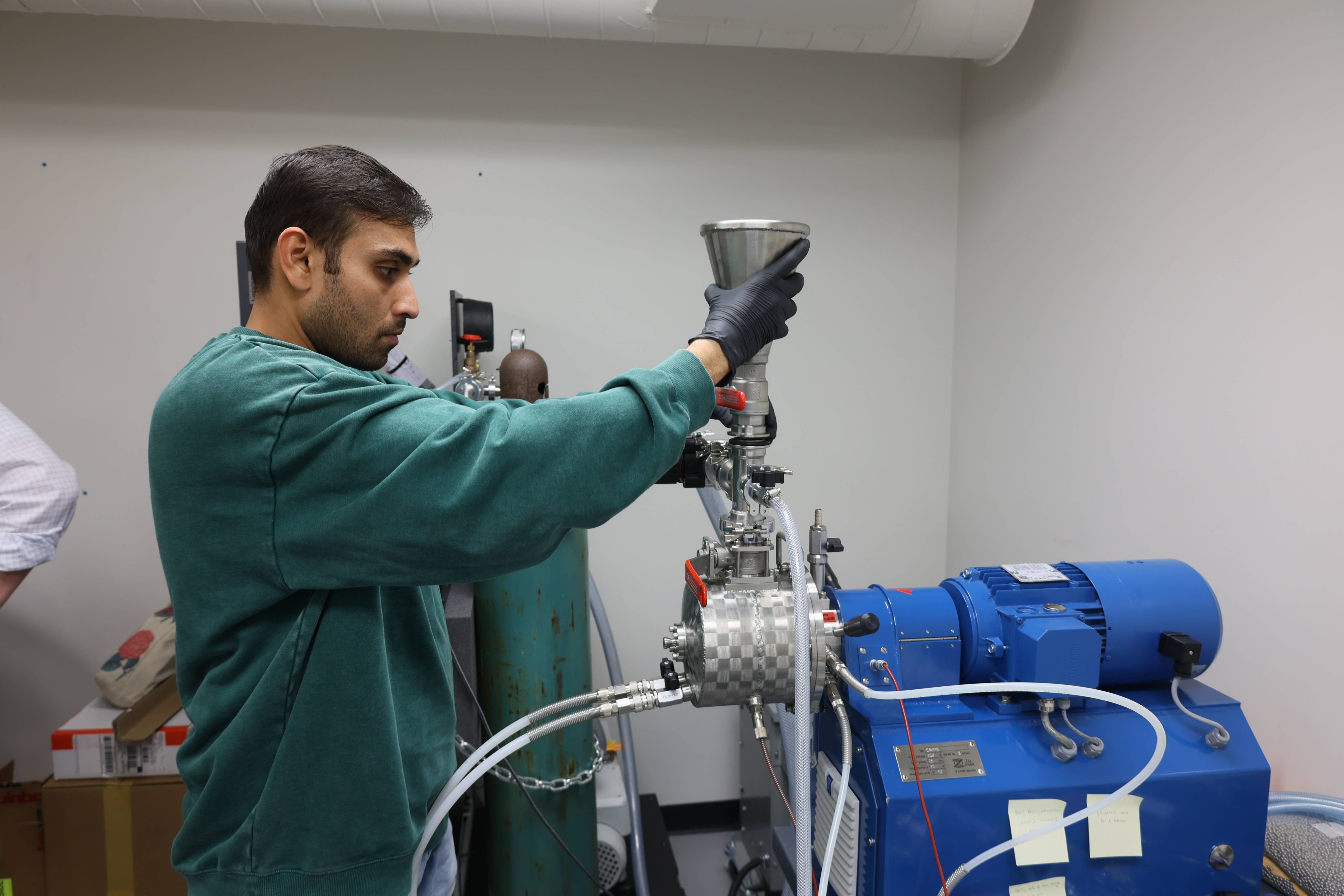
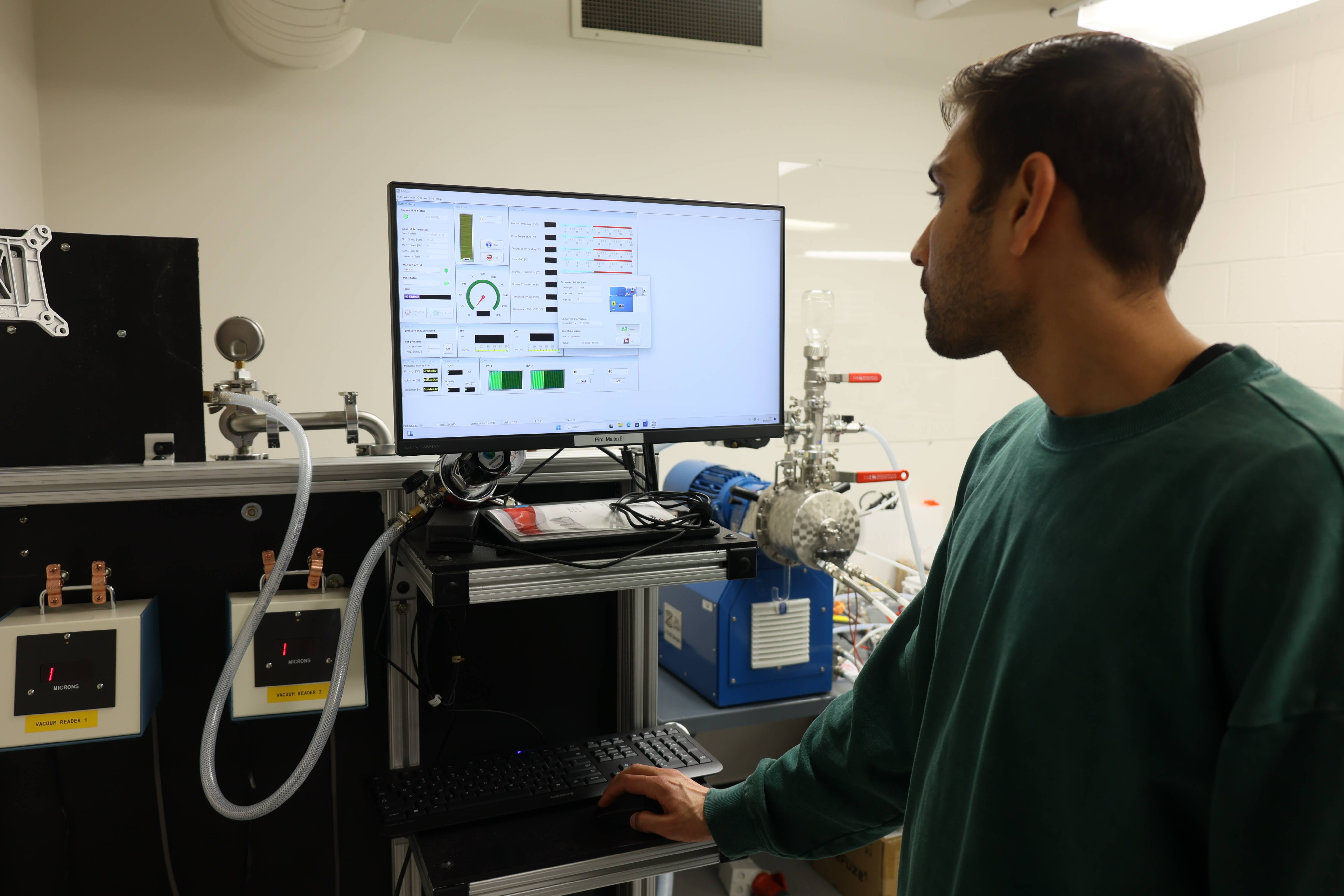
FEMTO 1100 is a 120W powered variable speed polishing head (0-200 rpm) attached with NANO 2000T grinding/polishing machine for semi-automated metallographic specimen preparation. The FEMTO 1100 can also run either automatically with the NANO polishing base or in a manual mode independently control from the NANO polisher. The 10” wheels are outfitted with SiC grinding papers on a steel platen as well as a variety of polishing pads that are mounted on a magnetic platen.
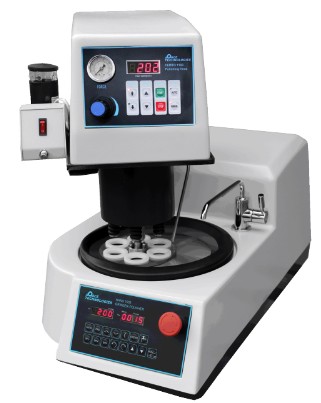
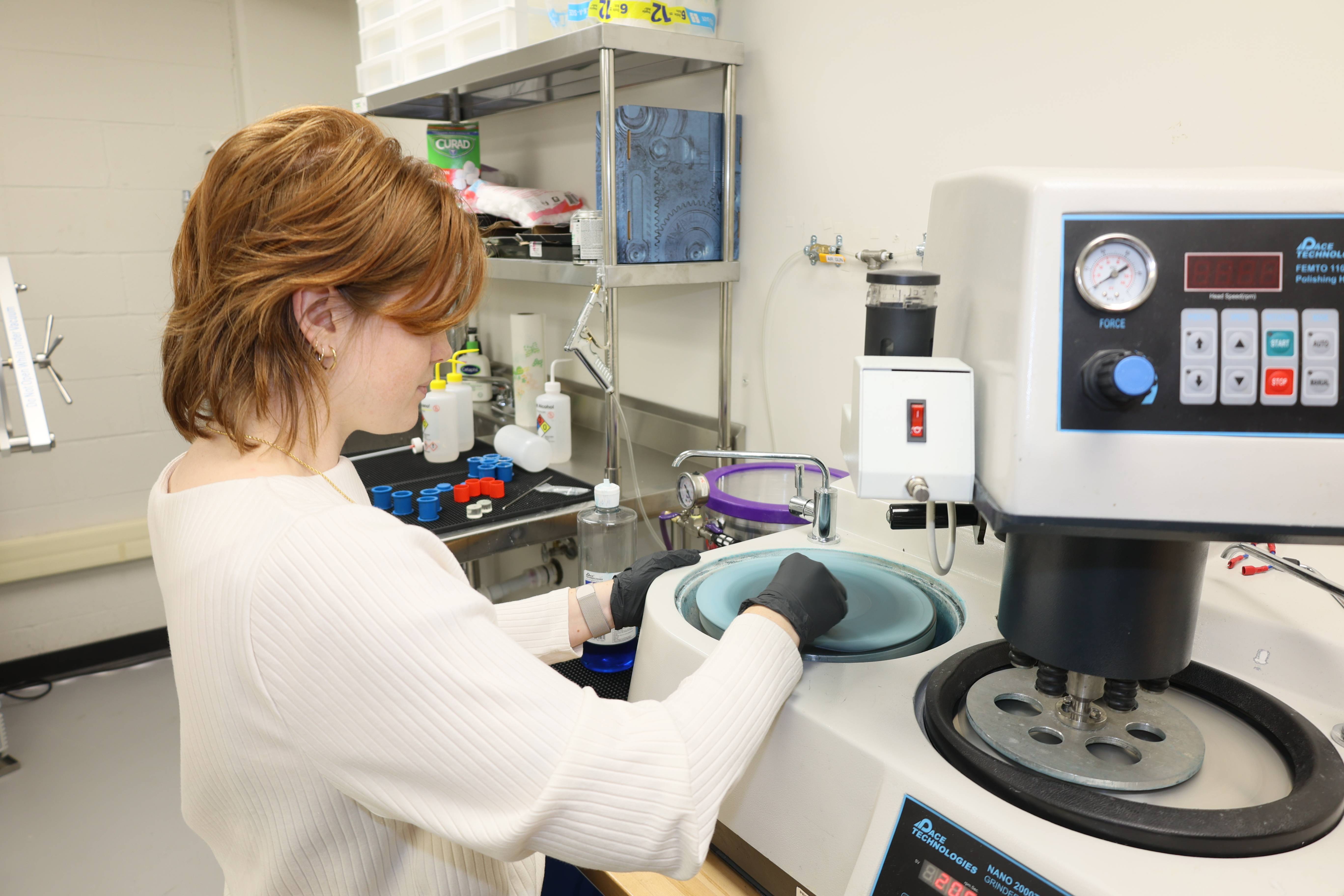
MTI GSL-1500X Tube Furnace can operate up to 1500°C and run under a variety of working atmospheres. The tube furnace is equipped with a roughing pump to purge the furnace prior to annealing treatment.
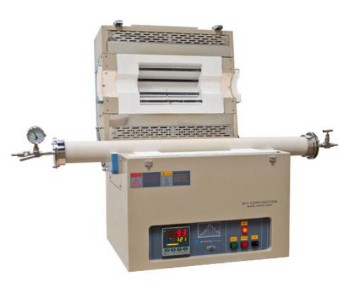
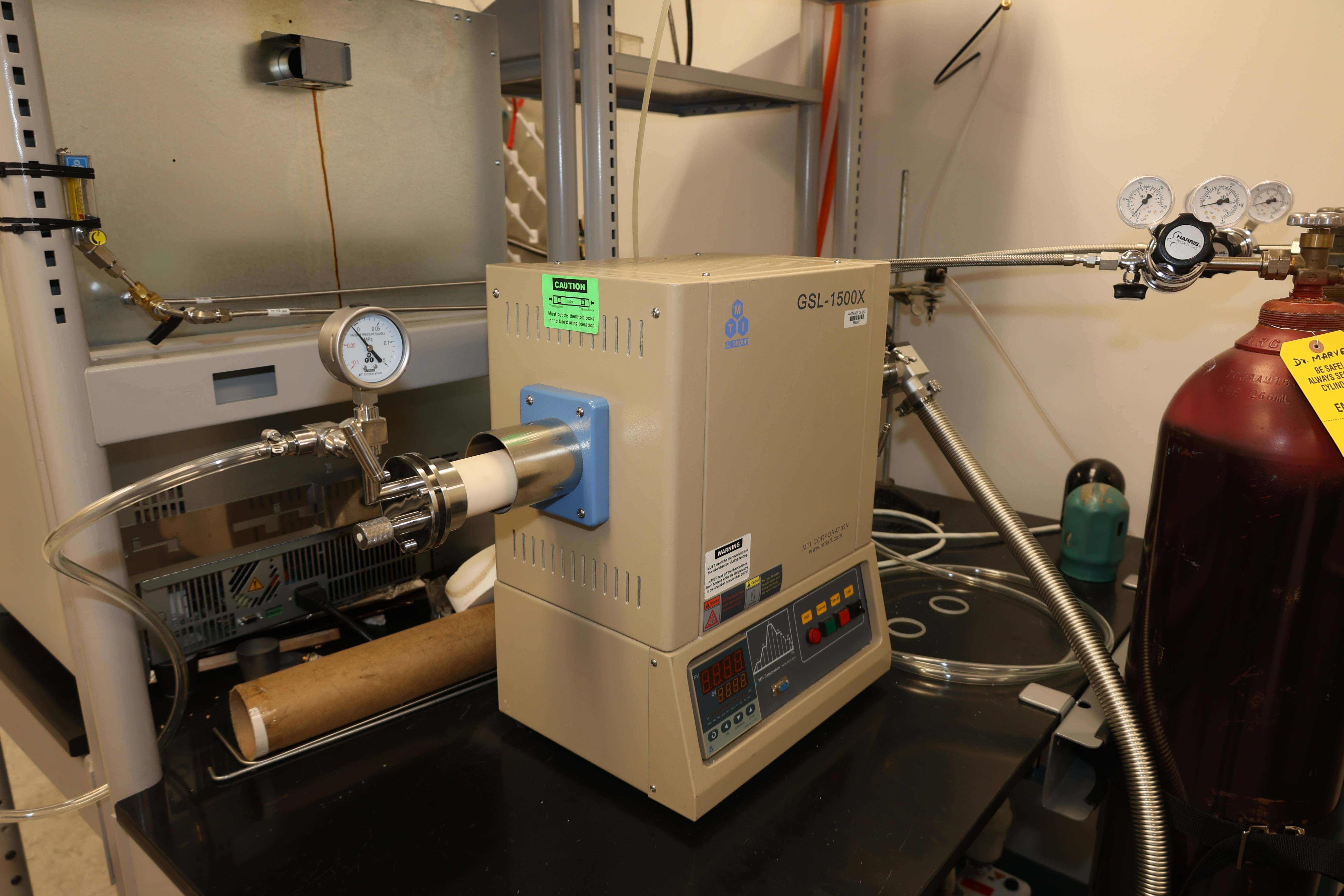
MSE supplies PRO Lab scale small 3-ton manual hydraulic pellet press is used to quickly consolidate loose powder into dense green bodies with 3 mm, 6.25 mm, or 10 mm diameters. These compacts can then be heat treated or tested for mechanical properties.
OMAX NFJ-120A Light Optical Microscope is fitted with four different optical lenses and has an OMAX A35140U 14MP digital camera. The light source is provided by a 6V 30W halogen light bulb.
Sun-Tech Model FM-1 Microhardness Indenter is capable of up to 1 kgf of indentation force on polished surfaces. The instrument is fitted with an OMAX A3590U 9MP digital camera that facilitates digitization of indentation measurements.
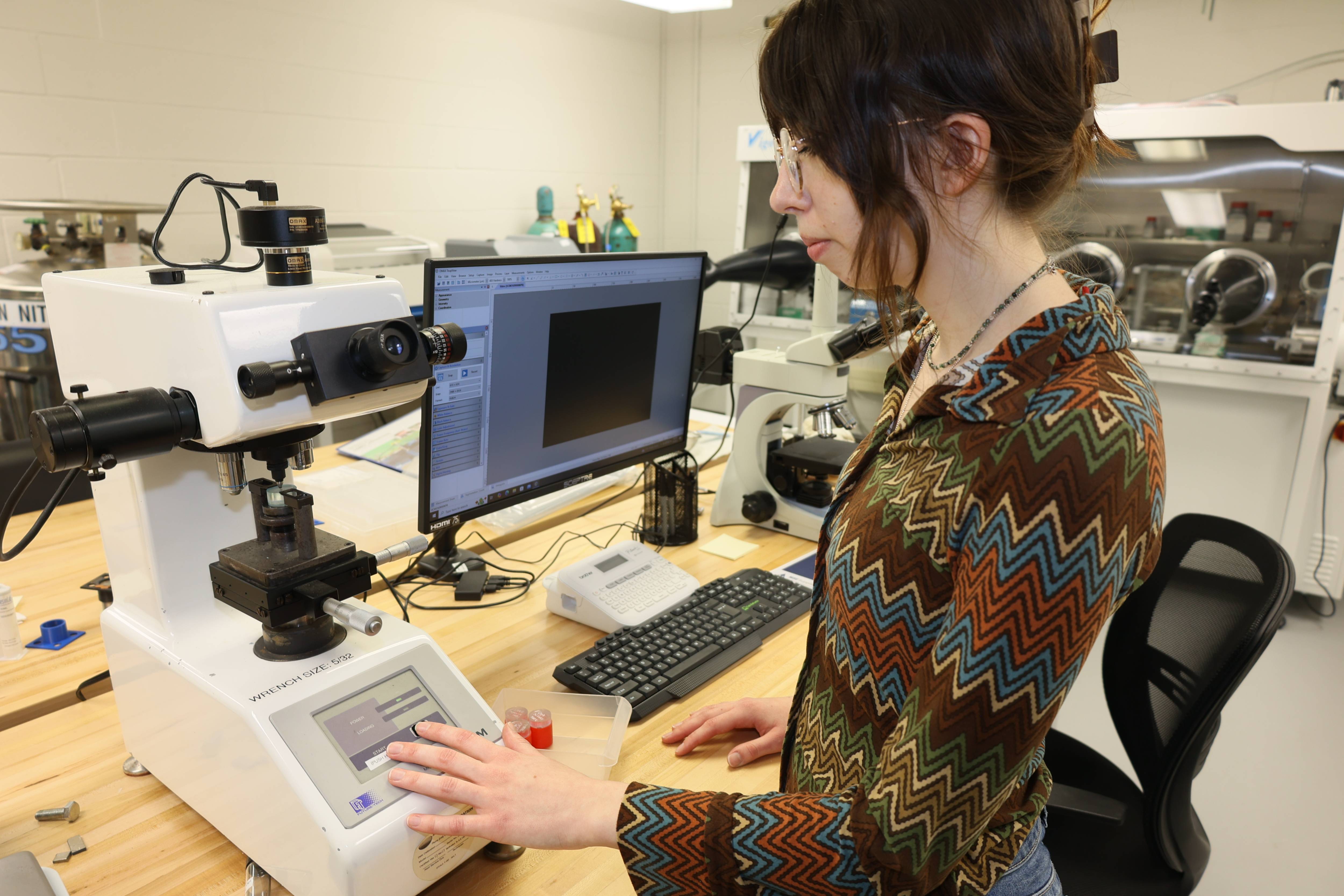
The Branson Ultrasonic Bath system is a process equipment for the cleaning of parts using ultrasonic energy. It is the newest generation of product using this sophisticated technology for a variety of customer applications.
Laser diffraction particle size analyzer that measures particle size distributions of wet or dry powders with a measurement range from 10 nm to 3.5 mm
Atmospheric Plasma Spray
The Sulzer Metco 9MB plasma spray gun and the iPro™-90 internal spray gun are advanced tools specifically designed for depositing thermal spray coatings in an air atmosphere. This process is commonly referred to as Atmospheric Plasma Spraying (APS). Both plasma spray guns operate under the control of the 9MC plasma control unit, which offers a high level of automation, precise operation, real-time monitoring, and control of various parameters associated with the plasma spray process.
This Atmospheric Plasma Spraying (APS) system is engineered to utilize argon (Ar) and nitrogen (N₂) as primary gases, while hydrogen (H₂) and helium (He) serve as secondary gases to modify the plasma characteristics and
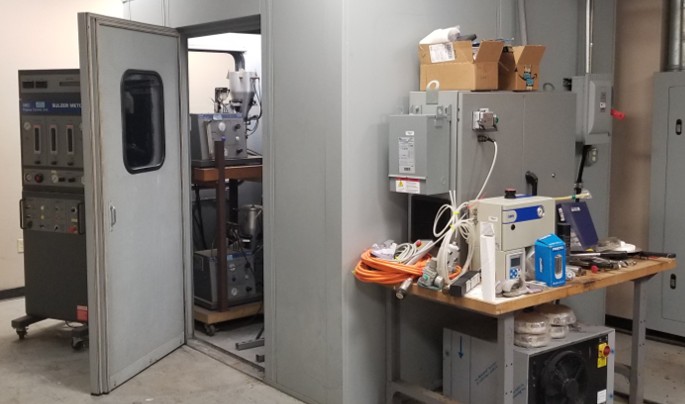
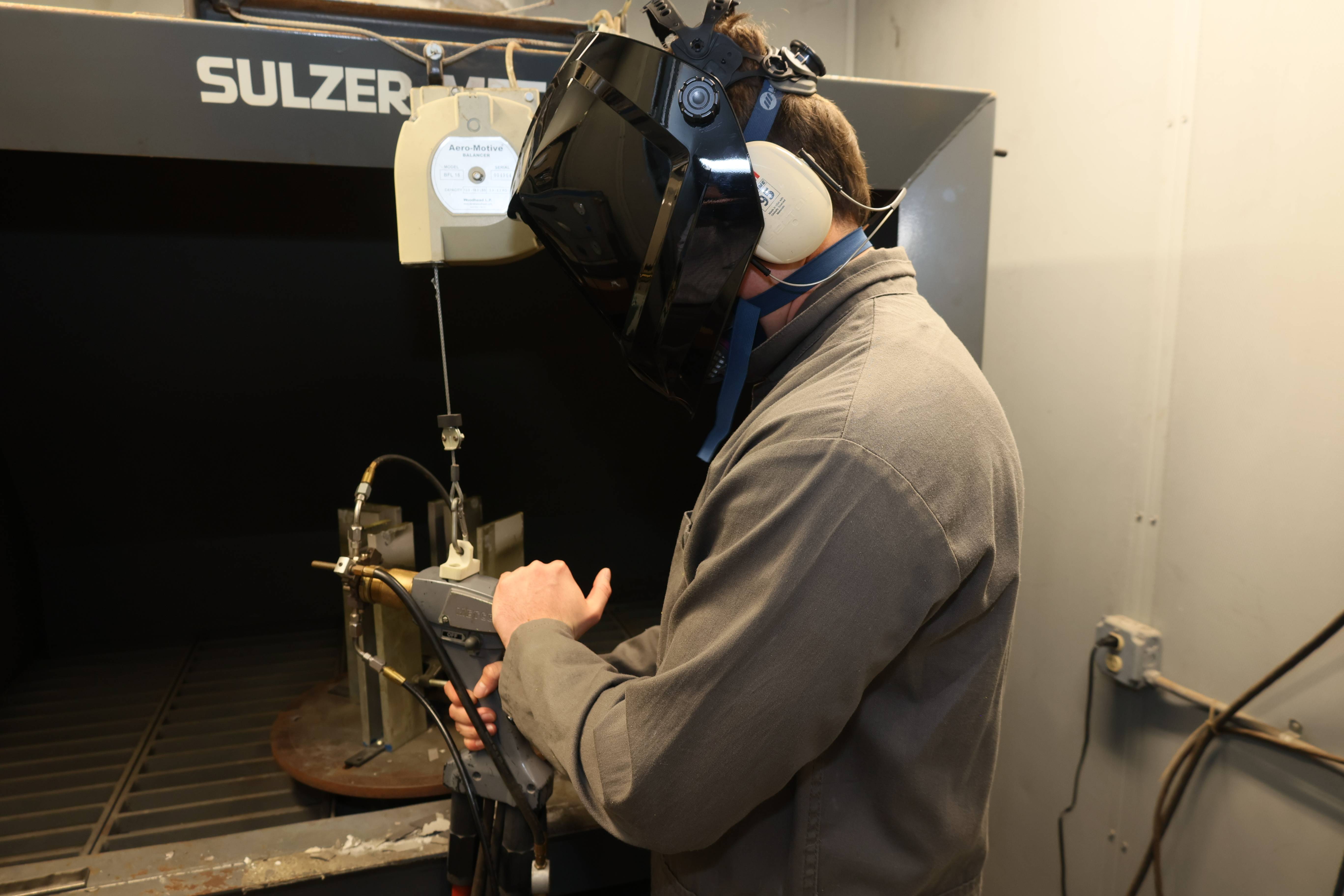
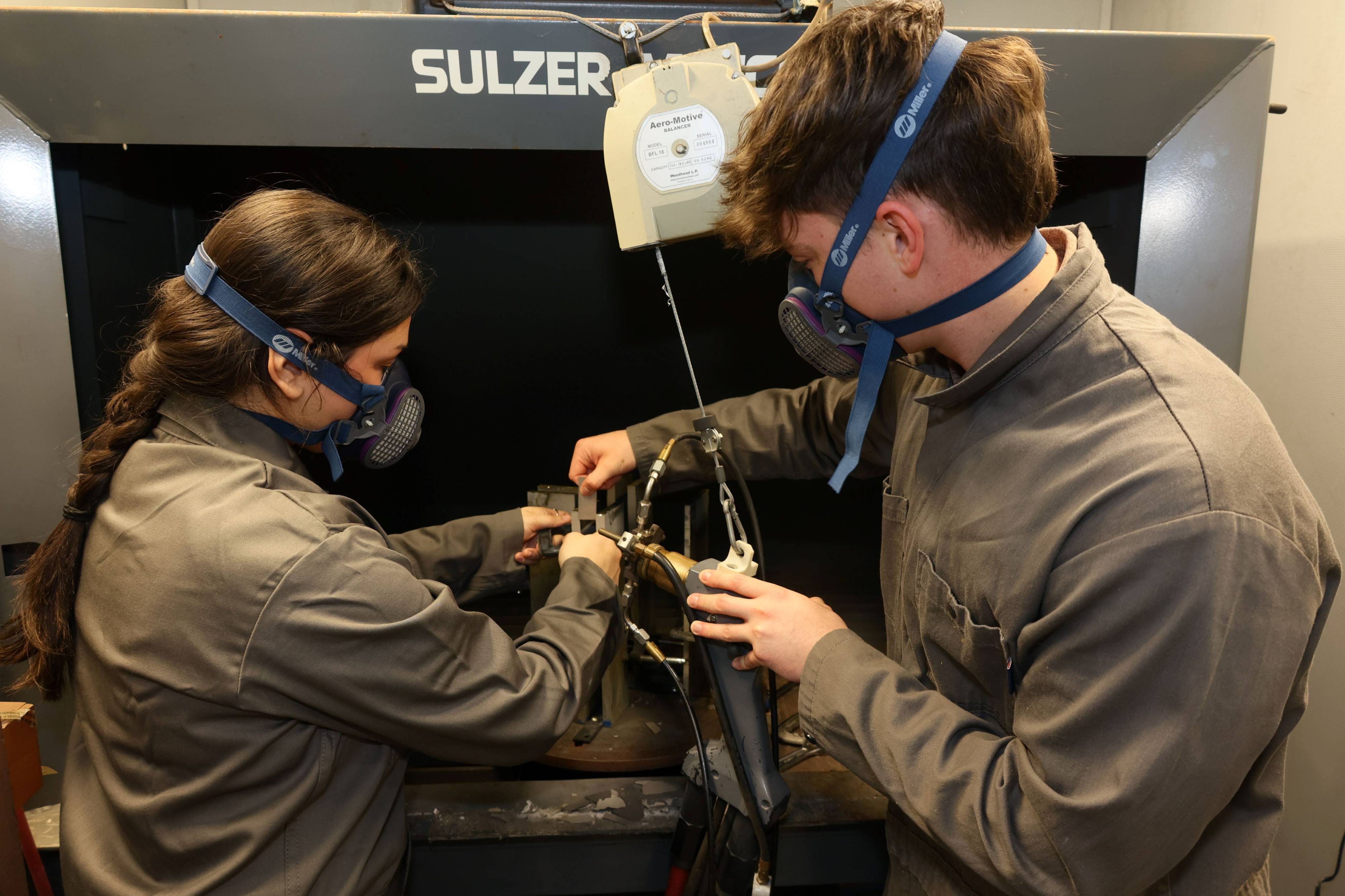
The MSE Supplies Devanathan-Stachurski (DS) Cell is an electrochemical testing system designed for studying hydrogen diffusion and permeation in materials. It enables precise measurement of hydrogen transport through thin membranes, making it a critical tool for evaluating hydrogen embrittlement resistance in metals and alloys. The system consists of dual electrochemical cells, allowing for controlled hydrogen charging on one side and detection on the other, facilitating in-depth analysis of hydrogen-related degradation mechanisms.
Ceramics Lab
The Sintering and Thermal Processing Laboratory is equipped with state-of-the-art tools for densification and heat treatment of materials. At the core of our capabilities is the Fuji Dr. Sinter Lab Jr. Spark Plasma Sintering (SPS) system, which enables rapid consolidation of powders through the application of pulsed electric current and uniaxial pressure, allowing for precise control over microstructure and phase evolution. Complementing this is the 25-ton Carver Press, used for compacting powders into green bodies prior to sintering.
For post-processing and annealing treatments, the lab houses the Centorr LF 22-2200 Furnace, capable of reaching ultra-high temperatures under controlled atmospheres, enabling studies on grain growth, phase transformations, and thermal stability. These tools support research in advanced sintering techniques and tailored heat treatments to optimize material properties.
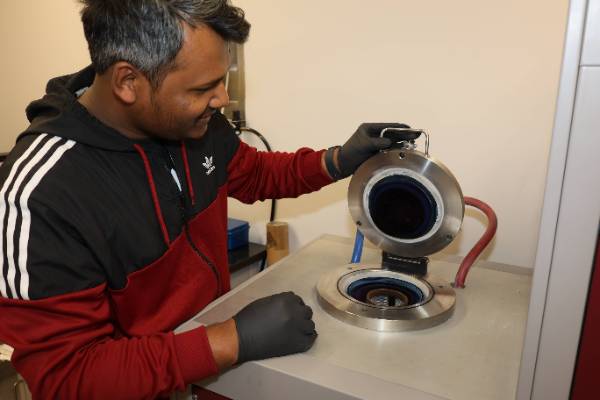
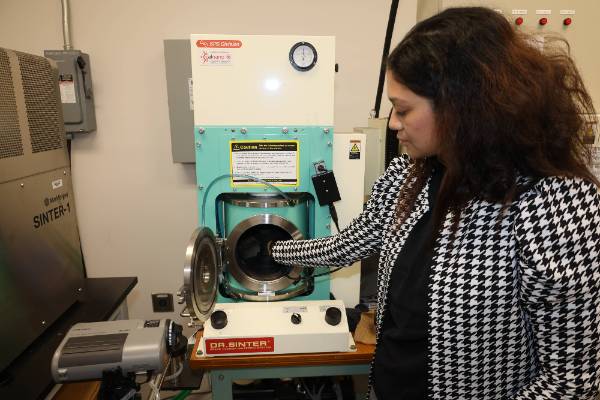

A 25-ton uniaxial hydraulic press and accompanying WC die sets are provided by MSE Supplies. The press and die sets are used to quickly consolidate loose powder into dense green bodies with 3 mm, 6.25 mm, or 10 mm diameters. These compacts can then be heat treated or tested for mechanical properties.
The Dr. Sinter SPS system is used to densify particulate metal and ceramic powders into consolidated pellets. The sintering conditions that may be changed include heating rates, dwell temperatures, dwell times, and applied pressure.
The top-loading Centorr furnace can reach up to 2000 °C with vacuum or inert atmospheres. The furnace is constructed with ultra clean tungsten mesh heating elements and tungsten/molybdenum heat shields.
Shared Facilities
Mechanical and Industrial Engineering Department
Struers Accutom-5 cut-off machine is packed with easy-to-use functions optimized for precision cutting with a minimum of effort.
The Indenter is used to perform nanoindentation tests on samples to measure microhardness and elastic modulus. After calibration, this instrument is useful to measure several mechanical properties on consolidated powder compacts to eliminate deleterious effects of porosity. The indenter can be operated in either displacement or load modes.
The MTS Landmark 100-kN is a servo-hydraulic testing system designed for high-precision mechanical testing. It supports tensile, compression, and fatigue testing with a load capacity of 100 kN, making it ideal for evaluating the strength, durability, and deformation behavior of materials and components under various loading conditions. Its advanced control system ensures accurate force and displacement measurements, enabling detailed mechanical property analysis.
LSU Shared Instrumentation Facility
Information below is copied from LSU's Shared Instrumentation Facility website.
The ThermoScientific Helios G5 is a DualBeam focused ion beam microscope (FIB). It has an electron column for ultra-high-resolution scanning electron microscopy (SEM) tasks and a xenon (Xe) plasma ion column for sample preparation for TEM and atom probe tomography (APT), as well as for 3D characterization of materials.
Use of the Auto Slice & View software in combination with our Oxford Instruments Ultim®Max energy dispersive X-ray spectrometer (EDS) and/or Oxford Instruments Symmetry® Electron Backscatter Diffraction (EBSD) detector allows fully-automated multi-modal materials characterization workflows.
The ThermoFisher Spectra 300 S/TEM (60–300 keV) is a high-resolution aberration corrected scanning transmission electron microscope. The microscope is equipped with a high-brightness X-FEG source, Cs CETCOR image and S-CORR probe corrector system, Lorentz lens, Super-X EDS detector, DualEELS, and 4D STEM detectors. A suite of sample holders offers a wide range of in situ and operando TEM capabilities.
Microscope installation currently in progress.

